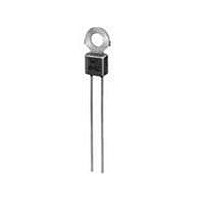PTFM04BH471Q2N34B0 Murata, PTFM04BH471Q2N34B0 Datasheet - Page 79

PTFM04BH471Q2N34B0
Manufacturer Part Number
PTFM04BH471Q2N34B0
Description
PTC THERMISTOR
Manufacturer
Murata
Series
PTFMr
Type
PTCr
Datasheet
1.PRF21BA471QB1RA.pdf
(100 pages)
Specifications of PTFM04BH471Q2N34B0
Thermistor Type
PTC
Resistance
100ohm
Operating Temperature Range
-10°C To +70°C
Operating Voltage Range
16V
Thermistor Case Style
Radial Lead
No. Of Pins
2
Length/height, External
13.2mm
External Width
7.5mm
Tolerance
20 %
Termination Style
Radial
Current Rating
0.1 Amp
Dimensions
4 mm Dia.
Voltage
16 V
Rohs Compliant
Yes
Lead Free Status / RoHS Status
Lead free / RoHS Compliant
Lead Free Status / RoHS Status
Lead free / RoHS Compliant
Available stocks
Company
Part Number
Manufacturer
Quantity
Price
Company:
Part Number:
PTFM04BH471Q2N34B0
Manufacturer:
MURATA
Quantity:
1 140
!Note
No.
10 High Temperature Load
(*) The resistance measurement after the test.
(**) Above mentioned soldering is done under the following conditions at our side.
1
2
3
4
5
6
7
8
9
• Glass-Epoxy PC board
• Standard land dimensions
• Recommendable solder paste
• Recommendable solder profile
PRF18_471R Series
It is measured by applying voltage less than 1.5VDC.
(by a direct current less than 10mA.) after left at 25 2 C for 2 hours.
Above conditions are mentioned in Notice.
Resistance Value
Adhesive Strength
Vibration Resistance
Solderability
Soldering Heat Resistance
Dry Heat Resistance
Cold Resistance
Temperature Cycling
Damp Heat Resistance
• Please read rating and !CAUTION (for storage, operating, rating, soldering, mounting and handling) in this catalog to prevent smoking and/or burning, etc.
• This catalog has only typical specifications because there is no space for detailed specifications. Therefore, please review our product specifications or consult the approval sheet for product specifications before ordering.
Overheat Sensing Chip Tight Tolerance Type Specifications and Test Methods
Item
The resistance value shall be within the specified
tolerance.
There is no sign of exfoliation on electrode.
Normal appearance
Resistance change: not to exceed 20% (*)
Min. 95% electrode is covered with new solder.
Resistance change: not to exceed 20% (*)
Resistance change: not to exceed 20% (*)
Normal appearance
Resistance change: not to exceed 20% (*)
Sensing temperature change: not to exceed 1 C
Specification
After applying max. operating voltage for 3 minutes and
leaving for 2 hours in 25 C, measured by applying voltage less
than 1.5VDC. (by a direct current less than 10mA).
EIAJ ET-7403 term 9
Prepare soldered PTC to PCB (**)
and add the force of 5.0N in the direction as shown below.
(PTC=POSISTORr)
JIS C 5102 term 8.2
Soldered PTC to PCB (**)
JIS C 60068-2-20(1996)
JIS C 60068-2-20 (1996)
Soldered PTC to PCB. (**)
150 2 C leave for 1000 12 hours
Soldered PTC to PCB. (**)
-20 3 C leave for 1000 12 hours
JIS C 5102 term 9.3
Soldered PTC to PCB. (**)
+40 2 C, 90-95%RH leave for 500 8 hours
Soldered PTC to PCB. (**)
85 2 C (in air), load max. operating voltage
for 1000 12 hours
Vibration: 10-55-10Hz (1 min.)
Width: 1.5mm
Vibrate for 2 hours. in each of 3 mutually
perpendicular plane for a total of 6 hours
Solder temp.: 230 5 C
Solder: Sn63%/Pb37% (or 60%/40%)
Soaking time: 3 0.5 seconds
Soaking position: Until a whole electrode is soaked.
Solder temp.: 260 5 C
Solder: Sn63%/Pb37% (or 60%/40%)
Flux: containing less than 0.2wt% of chlorine
Soaking time: 10 0.5 seconds
Soaking position: Until a whole electrode is soaked.
Preheating: 150 5 C, 3 minutes
Soldered PTC to PCB. (**)
Times: 5 cycles
Step
1
2
3
4
room temp.
room temp.
Temp. ( C)
+150+3, -0
-20+0, -3
Test Condition
PTC
F
Time (min.)
10 to 15
10 to 15
30
30
Glass Epoxy PCB
F
77
Apr.25,2011
R90E.pdf
11












